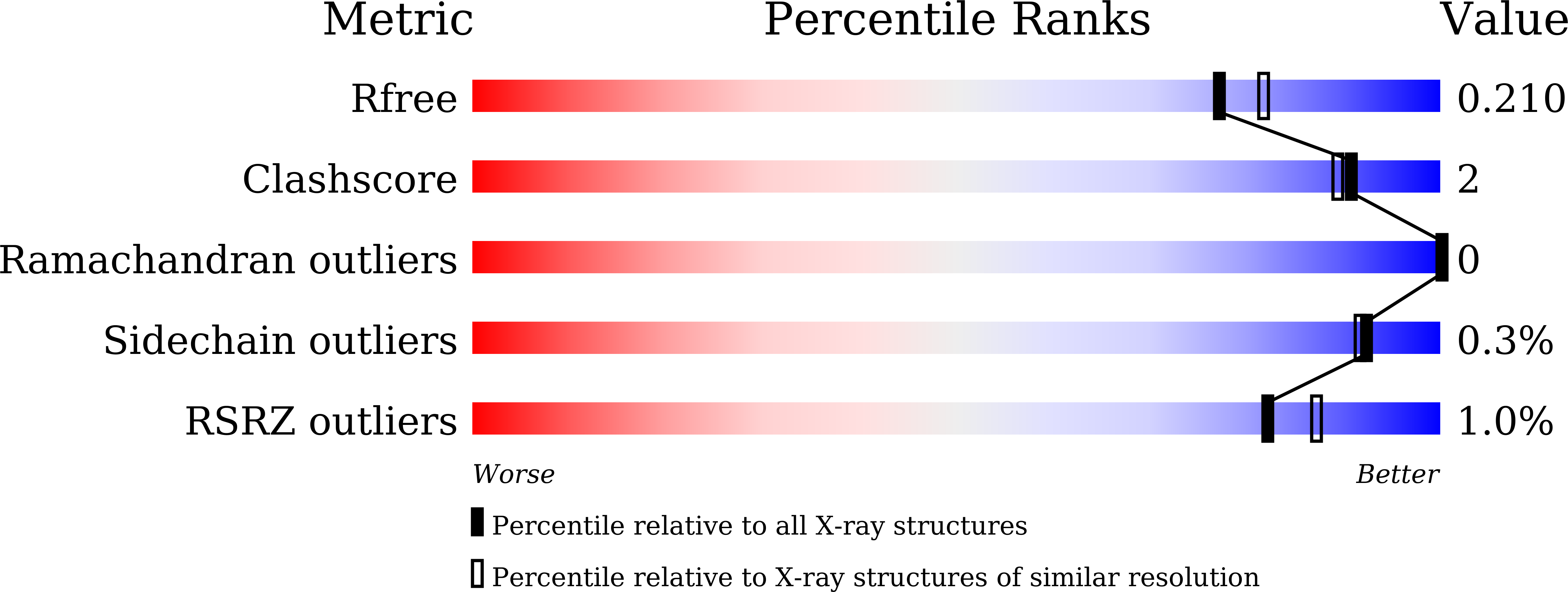Structural differences in the FAD-binding pockets and lid loops of mammalian CRY1 and CRY2 for isoform-selective regulation.
Miller, S., Srivastava, A., Nagai, Y., Aikawa, Y., Tama, F., Hirota, T.(2021) Proc Natl Acad Sci U S A 118
- PubMed: 34172584
- DOI: https://doi.org/10.1073/pnas.2026191118
- Primary Citation of Related Structures:
7D0M, 7D0N, 7DLI, 7EJ9 - PubMed Abstract:
The circadian clock is a biological timekeeper that operates through transcription-translation feedback loops in mammals. Cryptochrome 1 (CRY1) and Cryptochrome 2 (CRY2) are highly conserved core clock components having redundant and distinct functions. We recently identified the CRY1- and CRY2-selective compounds KL101 and TH301, respectively, which provide useful tools for the exploration of isoform-selective CRY regulation. However, intrinsic differences in the compound-binding FAD (flavin adenine dinucleotide) pockets between CRY1 and CRY2 are not well understood, partly because of nonoptimal properties of previously reported apo form structures in this particular region constituted by almost identical sequences. Here, we show unliganded CRY1 and CRY2 crystal structures with well-defined electron densities that are largely free of crystal contacts at the FAD pocket and nearby lid loop. We revealed conformational isomerism in key residues. In particular, CRY1 W399 and corresponding CRY2 W417 in the FAD pocket had distinct conformations ("out" for CRY1 and "in" for CRY2) by interacting with the lid loop residues CRY1 Q407 and CRY2 F424, respectively, resulting in different overall lid loop structures. Molecular dynamics simulations supported that these conformations were energetically favorable to each isoform. Isoform-selective compounds KL101 and TH301 preferred intrinsic "out" and "in" conformations of the tryptophan residue in CRY1 and CRY2, respectively, while the nonselective compound KL001 fit to both conformations. Mutations of lid loop residues designed to perturb their isoform-specific interaction with the tryptophan resulted in reversed responses of CRY1 and CRY2 to KL101 and TH301. We propose that these intrinsic structural differences of CRY1 and CRY2 can be targeted for isoform-selective regulation.
Organizational Affiliation:
Institute of Transformative Bio-Molecules, Nagoya University, 464-8601 Nagoya, Japan.
















